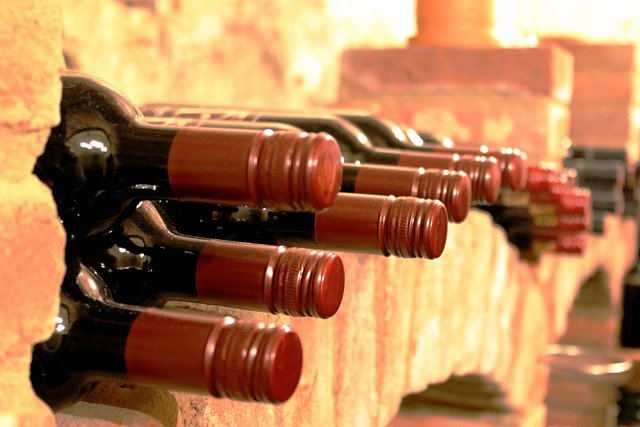No headline found
Wine refrigerators, also known as wine coolers or wine cellars, are purpose-built appliances that maintain consistent temperatures between 45-65°F, depending on wine type. These units address the specific storage needs that regular household refrigerators cannot meet, including vibration control, proper humidity levels, and UV protection. The technology behind wine refrigeration has evolved significantly, incorporating thermoelectric cooling systems and compressor-based designs to accommodate various household needs and collection sizes.

Wine refrigeration technology has revolutionized how enthusiasts and collectors preserve their bottles at home. These specialized appliances provide controlled environments that standard kitchen refrigerators simply cannot match, protecting your investment and ensuring each bottle delivers its intended experience when opened. Understanding the essentials of wine refrigeration can help you make informed decisions about storing your collection properly.
Introduction to Wine Refrigerators
Wine refrigerators, also called wine coolers or wine chillers, are appliances specifically engineered to create optimal storage conditions for wine. Unlike conventional refrigerators that maintain temperatures too cold for proper wine storage (typically 35-38°F/1-3°C), wine refrigerators operate at higher temperature ranges between 45-65°F (7-18°C), depending on the wine type. These specialized units also maintain appropriate humidity levels, minimize vibration, and provide proper bottle positioning—all critical factors in wine preservation that standard refrigerators don’t address.
The technology behind wine refrigeration has evolved significantly over recent decades, making proper storage more accessible to everyday wine enthusiasts rather than just collectors with dedicated cellars. Modern wine refrigerators incorporate features like UV-protected glass doors, carbon filtration systems to eliminate odors, and digital temperature controls that allow precise adjustments for different wine varieties.
Understanding the Functionality of Wine Refrigerators
The primary function of wine refrigerators extends beyond simple cooling. These appliances create a stable environment that protects wine from its four main enemies: temperature fluctuations, improper humidity, light exposure, and vibration.
Temperature stability is perhaps the most crucial factor. Sudden temperature changes can cause wine to expand and contract, potentially pushing the cork out slightly and allowing oxygen to enter the bottle—a process that accelerates aging and can spoil the wine. Most quality wine refrigerators maintain temperatures within ±1°F of the set point, preventing these harmful fluctuations.
Humidity control represents another vital function. Optimal humidity levels (typically 50-70%) prevent corks from drying out and shrinking, which would allow air into the bottle. Conversely, excessive humidity can damage labels and potentially encourage mold growth. Many higher-end units include humidity control systems or display humidity readings to help monitor these conditions.
Vibration reduction mechanisms protect wine from disturbances that can accelerate chemical reactions and disrupt the aging process. Premium models feature compressors mounted on vibration-absorbing materials and specially designed shelving to minimize movement.
Types of Wine Refrigerators
Wine refrigerators come in several distinct categories to accommodate different needs and spaces. Single-zone refrigerators maintain one consistent temperature throughout the unit, making them ideal for collectors who focus primarily on either red or white wines. These models are typically more affordable and come in compact sizes suitable for smaller spaces.
Dual-zone refrigerators feature two independently controlled temperature compartments, allowing simultaneous storage of both red and white wines at their respective optimal temperatures. This versatility makes them popular among enthusiasts with diverse collections.
Built-in wine refrigerators are designed to be integrated into cabinetry, featuring front-venting systems that allow them to be installed under counters or within kitchen islands. These models offer seamless aesthetic integration but generally come at premium price points.
Freestanding units require clearance space around their sides for proper ventilation and are more flexible in terms of placement. They typically offer better value per bottle capacity compared to built-in models.
Larger capacity wine refrigerators, sometimes called wine cabinets, can store anywhere from 100 to several hundred bottles and often include advanced features like multiple temperature zones, security locks, and inventory management systems.
Benefits of Using Wine Refrigerators
The primary benefit of proper wine refrigeration is preservation of quality. Wine is a living product that continues to develop in the bottle, and proper storage conditions ensure this development happens as intended by the winemaker. Temperature stability prevents premature aging and maintains the wine’s intended flavor profile and aromatic qualities.
Wine refrigerators also protect your financial investment. Fine wines can represent significant expenditure, and improper storage can literally turn that investment to vinegar. For collectors with valuable bottles, the cost of a quality wine refrigerator represents insurance against spoilage.
Convenience represents another significant advantage. Wine refrigerators keep bottles at serving temperature, eliminating the need to chill whites before serving or bring reds to room temperature. This ready-to-serve accessibility enhances the spontaneous enjoyment of your collection.
Organization benefits shouldn’t be overlooked either. Dedicated wine storage with proper racking systems helps track inventory, rotation schedules, and aging potential. Many enthusiasts find this organizational aspect helps them better appreciate their collection and make more informed decisions about when to open specific bottles.
Choosing the Right Wine Refrigerator
Selecting the appropriate wine refrigerator involves assessing several key factors. First, consider your collection size and growth potential. It’s generally recommended to purchase a unit with at least 25-50% more capacity than your current collection to accommodate future acquisitions.
Space constraints will influence your options between built-in and freestanding models. Measure your available area carefully, accounting for door swing clearance and ventilation requirements. Remember that freestanding units need several inches of clearance around their sides and back.
Temperature requirements depend on your collection’s composition. If you primarily collect one type of wine, a single-zone unit may suffice. More diverse collections benefit from dual or multi-zone refrigerators that can simultaneously accommodate different wine styles.
Noise considerations matter, particularly if the unit will be placed in living areas rather than utility spaces. Thermoelectric cooling systems operate more quietly than compressor-based systems but typically have smaller capacities and less cooling power.
Energy efficiency varies significantly between models. Look for units with good insulation, LED lighting, and Energy Star ratings if operating costs are a concern.
Wine Refrigerator Features and Price Comparisons
The market offers wine refrigerators across a broad spectrum of prices and features. Entry-level countertop models holding 6-12 bottles typically range from $100-300, while mid-range freestanding units storing 30-50 bottles generally cost between $300-800. Premium built-in models and large-capacity wine cabinets can range from $1,000 to several thousand dollars depending on capacity and features.
| Category | Typical Capacity | Price Range | Key Features |
|---|---|---|---|
| Countertop | 6-12 bottles | $100-300 | Compact size, basic temperature control, often thermoelectric |
| Freestanding | 30-80 bottles | $300-1,000 | Digital controls, UV protection, vibration reduction |
| Built-In | 30-150 bottles | $700-2,500 | Front venting, seamless installation, multiple zones |
| Wine Cabinet | 100-300+ bottles | $1,500-5,000+ | Multiple zones, security features, inventory systems |
Prices, rates, or cost estimates mentioned in this article are based on the latest available information but may change over time. Independent research is advised before making financial decisions.
Beyond basic refrigeration, premium features to consider include carbon filtration systems that eliminate odors, display lighting with UV protection, digital inventory systems, humidity control, security locks, and sliding or wooden shelving that minimizes vibration and accommodates various bottle sizes.
Wine refrigeration represents an important consideration for anyone serious about wine enjoyment. By maintaining proper temperature, humidity, and storage conditions, these specialized appliances help preserve the character and quality of your collection while providing convenient access and organization. Whether you’re a casual enthusiast or dedicated collector, selecting the right wine refrigerator based on your specific needs and space constraints can significantly enhance your wine experience and protect your investment for years to come.




